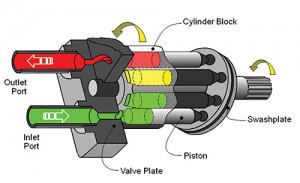
Has Crude Oil Reached a Peak?
 We rely on crude oil for many things like gasoline, kerosene, heating oil and various oil-based products. How do we find all this oil? Is there enough to meet all of our future demands or has crude oil reached peak production?
We rely on crude oil for many things like gasoline, kerosene, heating oil and various oil-based products. How do we find all this oil? Is there enough to meet all of our future demands or has crude oil reached peak production?
According to the U.S. Department of Energy, America produces over 5 million barrels of crude oil each day, and imports another 10 million barrels from other countries. To keep up with constant demands, U.S. oil companies must continually look for new oil sources, while improving production in existing oil wells around the country.
Oil, pumped from the ground, forms from the remains of small plants and animals that die and decay in the earth. Over millions of years, these decayed organisms become part of sedimentary layers, then turn into carbon-rich compounds that mix with shale or rock. As new sedimentary layers form, heat and pressure turn the carbon-rich compounds into crude oil and natural gas. Since it takes at least 10 million years to create crude oil in the ground, it’s considered a valuable, non-renewable resource.
How much crude oil remains below the earth’s surface? It’s impossible to know exactly since it’s underground, but oil production appears to have a tight lead over oil consumption. Hydraulic pumps, used in oil production, are still in big demand, and new oil wells are popping up across the country each year. However, many geologists and environmentalists believe that crude oil production could reach its peak as early as 2040, so they are researching other ways to meet future oil demands.



